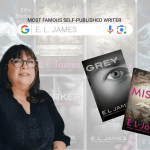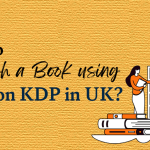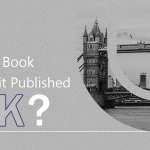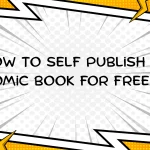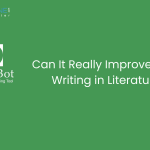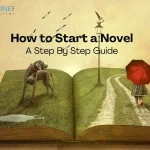In the vast landscape of literature, where countless books compete for attention, a compelling book hook is the secret weapon that can make your work stand out. A book hook is essentially a concise and captivating statement that grabs a reader’s attention, leaving them eager to delve into the pages of your book.
Read: Get along with us on how to improve writing skills by doing these simple things.
Crafting an effective book hook involves a delicate blend of art and strategy. In this comprehensive guide, we will unravel the intricacies of creating a book hook that captivates, intrigues, and leaves an indelible mark on your potential readers.
Understanding the Essence of a Book Hook:
At its core, a book hook is a literary tool with a profound marketing purpose—it serves as the beacon that draws readers into the world of your book. Think of it as the opening act that entices the audience, creating anticipation for the narrative spectacle that follows. The book hook encapsulates the soul of your story, offering readers a glimpse into its emotional landscape, thematic richness, and the promise of an unforgettable journey.
In essence, it’s the literary equivalent of a trailer, providing a tantalising preview that beckons readers to explore further. Crafting a compelling book hook involves distilling the essence of your narrative into a succinct, magnetic force, leaving readers eager to unravel the mysteries within.
Identifying Your Unique Selling Proposition (USP):
Before embarking on the journey of crafting a compelling book hook, authors must engage in a crucial exercise—identifying the Unique Selling Proposition (USP) of their book. The USP is the secret sauce that sets your story apart from the vast literary landscape. What makes your narrative distinctive, unforgettable, or particularly intriguing? It could be a unique plot twist, an unconventional protagonist, or the exploration of a rarely-delved-in theme.
Understanding your book’s USP is akin to uncovering its literary DNA, providing the foundational elements that will resonate with your target audience. A book hook anchored in the USP becomes a beacon, signalling to readers that your story offers something fresh, captivating, and unparalleled. It’s the key to unlocking the curiosity of potential readers and inviting them into a narrative world that promises a truly distinctive reading experience.
Elements of an Effective Book Hook:
- Clarity and Conciseness: A successful book hook is a masterclass in clarity and conciseness. In a world inundated with information, brevity becomes a virtue. The challenge lies in distilling the essence of your story into a few impactful words. Avoid the temptation to delve into unnecessary details. Instead, focus on the core elements that make your book special. A clear and concise hook acts as a literary compass, guiding readers towards the heart of your narrative without unnecessary detours.
- Emotional Resonance: Infusing emotion into your book hook elevates it from a mere introduction to a resonant connection. Readers are drawn to narratives that evoke universal emotions—love, fear, curiosity, and triumph. A hook that taps into these emotional wells becomes a bridge between the author’s words and the reader’s heart. This resonance transforms a casual encounter with your book into a meaningful, memorable experience, creating a lasting impression that extends beyond the initial engagement.
- Intriguing Questions or Statements: An effective book hook operates as a literary hook, drawing readers in with intriguing questions or bold statements. Pose queries that linger in the reader’s mind, creating a sense of curiosity and anticipation. Craft statements that make readers yearn for answers, prompting them to embark on the journey your book promises. This technique not only engages the reader intellectually but also stirs the innate human desire for discovery, ensuring that your book remains at the forefront of their thoughts.
- Relevance to the Target Audience: Tailoring your book hook to resonate with the specific desires and interests of your target audience is paramount. Understanding the nuances of your readership allows you to craft a hook that speaks directly to them. Reflect their preferences in the choice of language, themes, or scenarios presented in the hook. When readers perceive a personal connection, they are more likely to view your book as a mirror reflecting their own literary cravings, increasing the likelihood of engagement.
- Showcasing Conflict or Tension: A compelling book hook introduces an element of conflict or tension, hinting at the challenges or obstacles your characters face. This creates a narrative tension that serves as a magnet for readers. A well-crafted hook that artfully suggests the stakes involved sparks anticipation, compelling readers to seek resolution within the pages of your book. By showcasing conflict, you invite readers into a world where the unfolding drama promises both struggle and triumph, captivating their imagination and motivating them to explore further.
You may also like: 7 Top Rated Self-Help Books of all time in 2024
Crafting Your Book Hook Step by Step:
- Summarising Your Story: Summarising your story is the foundational step in creating a compelling book hook. This involves distilling the essence of your narrative into a concise, impactful statement. This summary should clearly articulate the central theme, conflict, or unique aspect that defines your book. It serves as the core message you want potential readers to grasp—a teaser that sparks curiosity. A well-crafted summary provides a roadmap for the subsequent elements of your book hook, offering a glimpse into the soul of your story.
- Identify Key Emotions: Understanding the emotional landscape of your story is crucial for connecting with readers. Emotions are the catalysts that draw readers into a narrative, and identifying the primary emotions your story evokes helps shape the tone of your book hook. Whether it’s joy, suspense, heartbreak, or a myriad of feelings, these emotions become the bridge between your narrative and the reader’s experience. Pinpointing these emotional cues allows you to infuse the hook with the right sentiment, creating a resonant connection that encourages readers to delve deeper into your book.
- Brainstorm Intriguing Elements: The brainstorming phase is about uncovering the gems that make your story stand out. What elements make it unforgettable? What surprises lie in wait for the reader? Engaging in a creative brainstorming session helps you identify the unique aspects, key phrases, or concepts that will make your book compelling. This exploration sets the stage for crafting a hook that captivates by emphasising the distinctive elements that set your story apart in the literary landscape.
- Experiment with Language: Once you’ve identified the essence and intriguing elements, the next step is to experiment with language. Language is the brush with which you paint the canvas of your hook. Play with words, tones, and styles to find the most impactful way to convey your message. Experimentation is key—try different approaches until you strike the right chord. Consider your target audience and aim for a combination that not only aligns with your story but also resonates profoundly with those you intend to captivate.
- Seek Feedback: Testing your book hook in the crucible of feedback is essential. Share it with trusted friends, writing groups, or beta readers. Their insights provide valuable perspectives on what resonates and what might need refinement. This external input acts as a compass, guiding you towards the most effective elements of your hook. Be open to constructive criticism, allowing it to shape the final iteration of your hook.
- Refine and Polish: Refinement is a continuous process in crafting a compelling book hook. Polish your hook until every word serves a purpose. Aim for clarity, brevity, and a touch of poetic resonance that lingers in the reader’s mind. This is the stage where you meticulously prune unnecessary elements, ensuring that each word contributes to the overall impact. The goal is to create a hook that not only entices but also leaves an indelible imprint—a literary invitation that beckons readers to step into the world you’ve artfully crafted.
Examples of effective book hooks:
“In a world where memories are currency, one man is bankrupt. Can he reclaim his past before it’s sold off piece by piece?”
“When darkness falls, she rises. A tale of resilience, revenge, and the untamed power that dwells within.”
“In the heart of the city, secrets sleep like dragons. Uncover the mysteries that bind us, one revelation at a time.”
“Love in the time of war—a forbidden dance that echoes through generations. Will their passion withstand the test of time?”
Read: What is Allegory in Literature? Meaning, Definition & Examples of Allegory.
Crafting an irresistible book hook is both an art and a science. It requires a deep understanding of your story, your audience, and the alchemy of language. By distilling the essence of your narrative into a few carefully chosen words, you create a powerful magnet that draws readers into your literary world. Embrace the creative process, experiment boldly, and remember that a well-crafted book hook is a potent invitation—an invitation to embark on a journey that only your book can provide.





